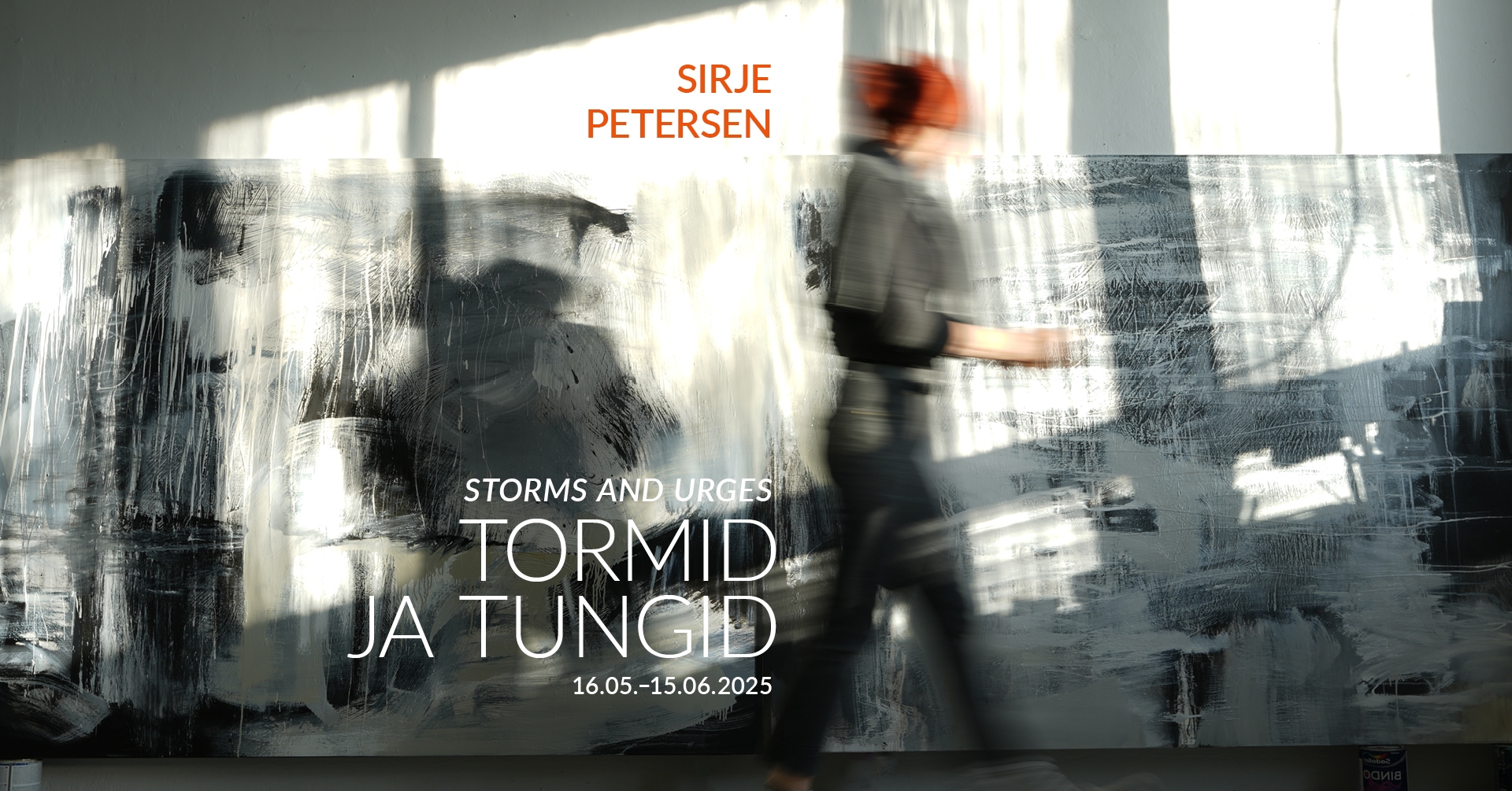The earlier part of the exhibition focuses on the 1980s and 1990s, conceptually divided into two periods: before and after the studio fire in 1992. After losing everything, she had to start from scratch: this gave rise to the series “The Invention of the Bicycle”, which explores surrealism and conceptualism. It is important to understand that the human being has always been at the heart of Sirje Petersen’s paintings, even when a recognisable human figure is not visible. The second part of the exhibition, covering the years 2002–2025, can be described as reflections of the human soul, with all its tensions, longings and quests. In addition to earlier works, the exhibition also features Petersen’s most recent paintings, including the large-scale piece “Storms and Urges” (2024/2025, 3 × 12 m).
“As we look at both the earliest and most recent stages of Sirje Petersen’s work, three recurring themes emerge: abstraction and colour as the core essence, a gaze that examines the human essence, and a firm conviction that life without art is impossible,” notes the curator, Kadri Asmer.
Besides the exhibition, a comprehensive publication, Sirje Petersen. “Storms and Urges” will be released. In this volume, experts from various fields interpret creativity and Petersen’s work through their own disciplines, including psychology, nature, music, theatre and art history.
Sirje Petersen (née Pannel, formerly Protsin; b. 1959) is an Estonian painter and Associate Professor of Painting at the Pallas University of Applied Sciences. Since 1981, she has participated in more than 200 solo and group exhibitions in Estonia and abroad. Her works are housed in numerous public and private collections. Petersen is a member of the Estonian Artists’ Association, the Estonian Painters’ Association and the Tartu Artists’ Union.
Curator: Kadri Asmer
Graphic design: Maarja Roosi
Thanks to: Siim Asmer, Karin Hango, Liis Neemre, Sven Pertens, Per William Petersen, Margus Punab, family Semilarski, Andrei Sõritsa, Mihkel Säre, Kaamos Group OÜ, SA Postimehe Fond
With the support of: Art Protsin, AkzoNobel, Cultural Endowment of Estonia, Estonian National Culture Foundation, Pallas University of Applied Sciences, Skizze, The Cultural Endowment of Tartu




